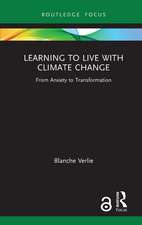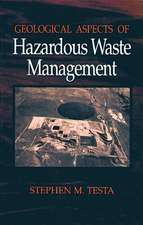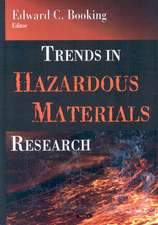Eisler's Encyclopedia of Environmentally Hazardous Priority Chemicals
Autor Ronald Eisleren Limba Engleză Hardback – 10 iul 2007
* The only product that centers on the most hazardous environmental chemicals to sensitive natural resources* The only single volume compendium on the subject, allowing ease in consulting* Written by a noted national and international authority on chemical risk assessment to living organisms
Preț: 1238.50 lei
Preț vechi: 1696.57 lei
-27% Nou
Puncte Express: 1858
Preț estimativ în valută:
236.99€ • 253.42$ • 197.60£
236.99€ • 253.42$ • 197.60£
Carte tipărită la comandă
Livrare economică 18 aprilie-02 mai
Preluare comenzi: 021 569.72.76
Specificații
ISBN-13: 9780444531056
ISBN-10: 044453105X
Pagini: 986
Dimensiuni: 192 x 262 x 45 mm
Greutate: 2.47 kg
Editura: ELSEVIER SCIENCE
ISBN-10: 044453105X
Pagini: 986
Dimensiuni: 192 x 262 x 45 mm
Greutate: 2.47 kg
Editura: ELSEVIER SCIENCE
Public țintă
Environmental research libraries, local/national government organizations and consultancy groups.Environmental researchers, students, managers, consultants, and legislators; ecologists and toxicologists; inorganic and organic chemists; and animal and public health workers. Lay public environmental conservation and environmental protection groups.
Cuprins
1. Acrolein2. Arsenic3. Atrazine4. Boron5. Cadmium6. Carbofuran7. Chlordane8. Chlorpyrifos9. Chromium10. Copper11. Cyanide12. Diazinon13. Diflubenzuron14. Dioxins15. Famphur16. Fenvalerate17. Gold18. Lead19. Mercury20. Mirex21. Molybdenum22. Nickel23. Paraquat24. Pentachlorophenol25. Polychlorinated Biphenyls26. Polycyclic Aromatic Hydrocarbons27. Radiation28. Selenium29. Silver30. Sodium Monofluoroacetate31. Tin32. Toxaphene33. Zinc






















